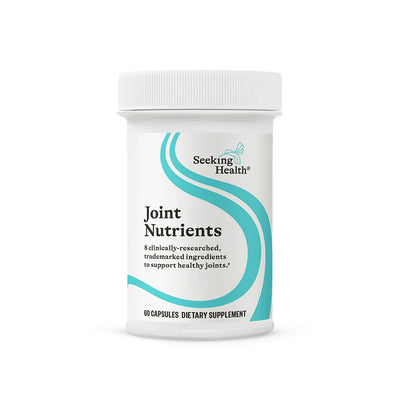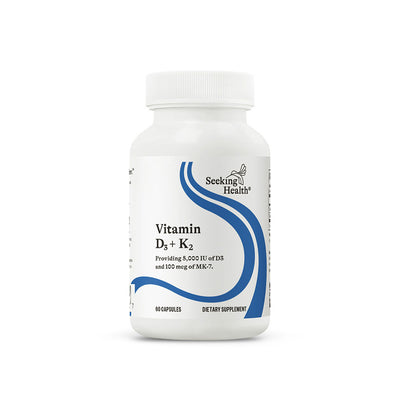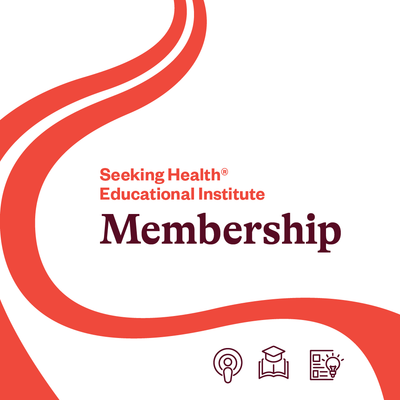Are you stressed out?
Overwhelmed by life?
Constantly battling illness or chronic disease?
Do you eat perfectly, exercise, take supplements, but still suffer from health issues?
Depressed or anxious?
An overactive stress response might be at the root of your problems.
Keep reading to learn how you can retrain your stress response to work for you, instead of against you.
You Only Have One Stress Response
Stress in any form can seriously interfere with your health. Not only is it mentally uncomfortable, it’s also one of the biggest roadblocks to losing weight and overcoming chronic disease. You might be surprised to learn then, that stress is also essential for survival.
The word stress has many meanings, but in the context of health, it’s the body’s reaction to various life challenges or stressors. A stressor can take almost any form. It can be an actual physical threat, an infection or illness, a negative thought, or strong emotion. It’s important to realize that the exact same stress response is activated every time we are “stressed” regardless of what the stressor is, real or imagined.
Our nervous system has evolved very little since the days of our primal ancestors. As a result, our stress response (which is largely mediated by the nervous system) is essentially the same as it was hundreds of thousands of years ago. We only have one stress response and it hasn’t changed much since we were cavemen.
Keep in mind that the more you fear a particular stressor, the stronger the stress response elicited. The stressors which you believe to be the most harmful, provoke the strongest stress response in your body.
Here is a picture of what happens on the physiological level in response to any stressor.

You only have one stress response. This means that your body reacts to all stressors (whether real or imagined) in the exact same way—by activating the sympathetic branch of your nervous system known as “fight or flight”. Every time we are stressed, our bodies automatically enter fight or flight, getting us ready to either engage in battle or run away from it. This triggers a predictable cascade of reactions in our bodies that ultimately results in:
- Increased heart rate and blood pressure (more blood available to fight or flight)
- Blood shuttled to skeletal muscles (away from digestive organs)
- Liver produces glucose (fuel needed to fight or flight)
- Dilation of eyes and lung bronchioles (to enhance vision and breathing capacity)
- Increased production of inflammation
Acute vs. Chronic Stress (and Inflammation)
Our bodies are equipped to handle acute stress (short-term bouts of stress), which has, in fact, allowed our species to survive to the present day. Chronic stress (long-term, ongoing stress), on the other hand, can have devastating effects ranging from compromised immunity, to mood disorders, to chronic disease, and beyond. These negative effects are largely correlated to the continuous and unrelenting production of inflammation.
Inflammation is a byproduct of the fight or flight state. Ironically, inflammation has kept humans alive through the millenia, yet is also responsible for the majority of modern diseases we now contend with. In a nutshell, your body produces inflammation in response to stressors ultimately to keep you alive.
Evolutionarily speaking, acute inflammation has allowed us to survive into modern times. Historically, some of our biggest threats were pathogenic bacteria entering the bloodstream, or getting injured running trying to escape from a predator. Acute (short-term) inflammation is a lifesaver in these situations. Inflammation rushes to the site of bacterial infection to quarantine it off, which is why when you get cut, the area becomes red and swollen. If you twist your ankle running away from a bear in the woods, inflammation rushes to create a cast in your ankle to help keep you going. But this type of inflammation is short-term, leaving the body shortly after the threat has passed. Chronic stress refers to ongoing, long-term stress that doesn’t stop. Stress is meant to be short-term (acute), and historically, it has been. You either escaped from the bear in the woods...or you didn’t. In any case, the chase didn’t last for hours or days on end. Only recently in human evolution have we entered an era where we are constantly ‘stressed out’ to no end. When stress keeps going, so does the production of inflammation. Thus, chronic stress equates to chronic inflammation. Inflammation lies at the root of many diseases and disorders, which is likely the link between chronic stress and chronic disease.
6 Reasons Chronic Stress Hurts
- It zaps your tolerance to stress, making you more reactive (chemically and physically) to future stressors.
- Eventually, your adrenal glands aren’t able to keep up with the need for producing the stress hormones adrenaline and cortisol, and they become exhausted and throw in the towel (this is called adrenal fatigue). Often you’ll see thyroid function decline as well.
- You lose the ability to control the production of inflammation if your tired adrenals can’t produce enough of the anti-inflammatory hormone cortisol.
- Chronic stress leads to chronic inflammation. The majority of modern diseases have chronic inflammation at their root (such as autoimmune disease, obesity, and heart disease, to name a few).
- If the body believes it’s in danger, it will hold onto calories and weight (in anticipation of potential food scarcity), making weight loss very difficult, if not impossible.
- When your sympathetic nervous system is activated, blood is shuttled away from your digestive system and towards your muscles (in preparation to fight or flight). When you are under stress, you can’t digest food properly because there’s no blood in the digestive system for it to do its job (the blood is in your muscles, preparing to run!).
The main takeaway point is this—stress in any form can seriously interfere with your goals and health. When your body thinks you’re in danger, it puts you into survival mode (which is basically the opposite of growth and healing mode). When your nervous system is in fight or flight, your body automatically shuts down its ability to heal damaged tissues, digest food properly, sleep deeply, procreate, or have good old-fashioned fun (which is ultimately what life is supposed to be about)! Stress may very well be at the root of your stubborn weight loss, autoimmune disease, chronic inflammatory conditions, sleep issues, poor digestion, slow wound healing, and about a thousand other issues.
Learn to Retrain Your Stress Response
Understanding your body’s natural response to stress is the first and most important step in learning to retrain your stress response to work for you, instead of against you. Ultimately, you have power over your stress response, that is, how you respond to the stressors in your life. Retraining your stress response simply takes time, practice, patience, and a whole lot of forgiveness.
A simple way to start retraining your stress response is this: when something starts to stress you out, ask yourself, “Is this thing that’s stressing me out worth producing inflammation over? Is it worth my health?” Nine times out of ten the answer is probably no. Evaluate your mindset, let go of expectations, forgive others, and forgive yourself. We are living in an imperfect world and that’s just reality. With time, you will learn how to not give away your “sympathetic” energy to anything that isn’t currently threatening your life.
Stress Less: 6 Steps
Understanding the physiology of your stress response is the first, and possibly most important, step in learning to let stress go. Here are six additional areas to address when working to retrain your overactive stress response.
- Nose breathing — Breathing through your nose, as opposed to mouth breathing, offers tremendous health benefits. Nasal breathing promotes activity of the parasympathetic (“rest and digest”) nervous system, which calms and relaxes the body, slows the breathing and the heart, and promotes digestion. Mouth breathing, on the other hand, often leads to rapid over-breathing, which hyperactivates the sympathetic nervous system, stressing the body more. Nasal breathing also helps more oxygen to get into your tissues. Breathing through your nose releases nitric oxide into the blood, increasing carbon dioxide (CO2), which, in turn, triggers the release of oxygen. In contrast, breathing through your mouth does not effectively release nitric oxide, meaning your cells won’t receive as much oxygen as they do through nose breathing, which leads to fatigue and stress.(1)Nasal breathing has another important advantage over mouth breathing. Whereas the mouth has no defense system, the nose is a major line of immune defense. Nose hairs act as a natural filter for bacteria, viruses, dust, pollen, and other airborne pathogens. Many people experience improved breathing, decreased allergies, and less illness when they learn how to effectively nasal breathe. Step 1: Retrain your body to breathe through your nose. Start by becoming aware of your breathing patterns during the day. Focus on keeping your lips closed unless you’re talking, eating, or exercising strenuously. Consider taping your mouth closed at night and/or taping your nostrils open (they make adhesive strips for both of these purposes).
- Mindfulness — Mindfulness is the practice of being fully present and aware of your thoughts and actions. Through awareness, you learn how to not be overly reactive or overwhelmed by life's many, inevitable stressors. Mindfulness is a skill that develops with practice. By bringing awareness to what you are experiencing and thinking, research indicates it can remodel your brain and make you less reactive to future stressors.(2) Step 2: Start with five minutes a day where you sit and focus on being mindful, then gradually work to increase the practice of bringing awareness to every moment. Assess how you are feeling: physically and mentally. Pay attention to your thoughts, but do so as an observer, without judgement. Many contemporary forms of mindfulness meditation emphasize breathing exercises. Try practicing nasal breathing during your mindfulness practice to get started!
- Attitude of gratitude — If you can only reduce stress in one area of your life, focus on increasing gratitude in your life, particularly around meal times. Developing an “attitude of gratitude” at mealtimes may be one of the most important things you can do to improve your digestion, nutritional status, and overall health. Expressing gratitude induces feelings of relaxation, which puts your nervous system into the parasympathetic (rest and digest) state (the opposite of fight or flight). When you make it a point to relax before, during, and after your meals, you are telling our body that it’s a safe time to eat food, which triggers blood to be sent toward your digestive organs, preparing them for incoming nutrition. If you are stressed or rushed during mealtimes, your body will be much less efficient at extracting nutrients from food because all of the blood that should be in your stomach, is instead in your muscles getting you ready to fight or flight! (3),(4) Step 3: Take five minutes before and after each meal to get into a relaxed state. This will facilitate better digestion and activation of your parasympathetic nervous system.
- Moderate exercise — Exercise junkies beware...too much exercise, or exercising when you’re tired or sick are significant stressors on your body. Over-exercising contributes to fatigue, burnout, immune system suppression, inability to lose weight, loss of bone density, and other undesirable outcomes. When we over-exercise, our bodies think we are endangered and it triggers the fight or flight stress response. On the flip side, inactivity is also very stressful for the body. In addition to muscle wasting and declining organ reserve, a lack of exercise causes metabolic and hormone imbalances and chemical changes in your brain which can lead to depression and more stress.(5),(6),(7) Step 4: Moderation is key when it comes to exercise! Move frequently in all the ways that your body is able to move. Lift heavy things 2-3 times a week. Elevate your heart rate 3-4 times per week (20-45 minutes of exercise at about a 60% intensity level). And sprint for a few minutes every 10 days or so, only when you’re feeling well.
- Sleep — Your body does the majority of its healing while you are asleep. A lack of sleep can make you more prone to becoming stressed and likewise, more stress in your life can lead to decreased sleep quality. Step 5: Do your best to maintain a regular sleep/wake cycle by going to bed at the same time every day, no later than 10:30pm. You need to get enough sleep (7–8 hours) and ideally regular hours to maintain a healthy circadian rhythm, which is essential for proper hormone production and balance. For the best quality sleep, block out or turn off artificial lights at night and in your bedroom to make it as pitch black as possible. (8)
- Supplemental support — Stress can also be caused by nutrient deficiencies and can also lead to nutrient deficiencies. Certain supplements can be very helpful to support the body’s response to stress and may help to support a sense of relaxation as well. Adaptogenic herbs (such as ashwagandha), glandular extracts (such as adrenal cortex), and specific nutrients (such as vitamin C) have been studied for their stress supportive properties.† Step 6: Talk to your healthcare team about supporting your stress response through supplementation. Learn about our Stress Support Supplement here.
The Bottom Line
Stress in any form, whether real or imagined, impacts your health. Ultimately, you have power over your stress response which you can retrain to be less reactive. Be patient with yourself as you learn nasal breathing, mindfulness, an attitude of gratitude, moderate exercise habits, and proper sleep hygiene. Consider supplements such as adaptogenic herbs or glandulars for additional stress support.† Most importantly, don’t compound your stress by stressing about stress! Stress triggers the fight or flight state of your nervous system which makes you far less effective at figuring out solutions to your problems. Take a deep breath (through your nose!), trust your instincts, and know that this too shall pass
Reference:
(1) https://www.ncbi.nlm.nih.gov/pubmed/8971255(2) https://www.nature.com/articles/nrn3916
(3) https://onlinelibrary.wiley.com/doi/full/10.1111/j.1467-6494.2004.00294.x
(4) https://research.ou.nl/en/publications/gratitude-and-health-an-updated-review
(5) https://www.thelancet.com/journals/lanpsy/article/PIIS2215-0366(18)30227-X/fulltext
(6) https://www.ncbi.nlm.nih.gov/pmc/articles/PMC3538475/
(7) https://www.ncbi.nlm.nih.gov/pmc/articles/PMC1332084/
(8) https://onlinelibrary.wiley.com/doi/full/10.1111/jsr.12710













